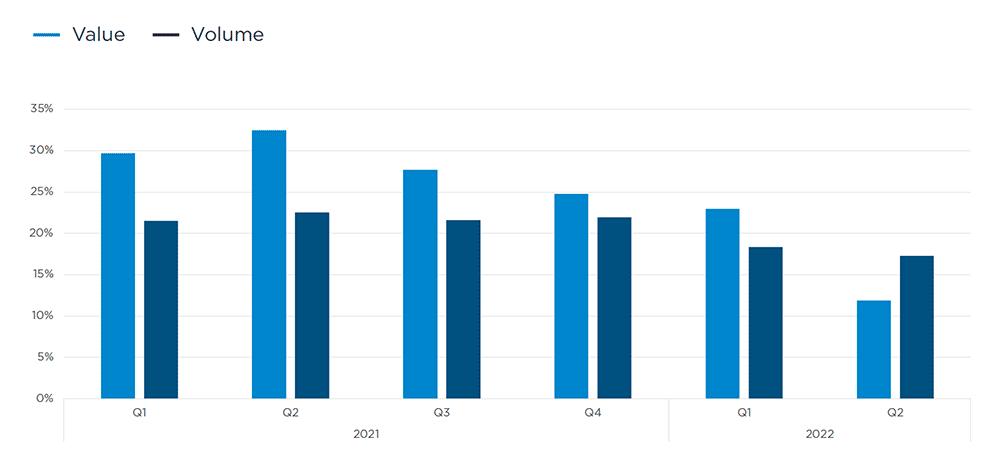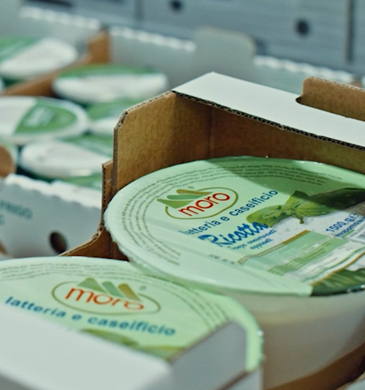Download The Argos Index®
Share
Main Conclusions
Decline of the Argos Index® to 10.0x EBITDA, back to its level of December 2021
The Argos Index® declined in Q2 2022, to 10.0x EBITDA. Although down 14% (1.6 EBITDA points) year on year from the peak of Q2 2021, the level remains high and corresponds to the average of the past five years.
The index correction is attributable to price changes at the high end of the market (multiples of the lower mid-market are stable) and to prices paid by strategic buyers, down slightly to 9.9x EBITDA. This decline is also reflected in the multiples. As in Q1, the share of transactions > 15x contracted sharply from 2021, while transactions < 7x increased and now account for 20% of the sample.
The index change is correlated to mid-market M&A activity, whose volume declined by 14% in Q2. Activity is beginning to be affected by the deteriorating political and economic context, i.e. the war in Ukraine lasting longer than expected, a steep rise in inflation after increases in energy and commodity prices, rapid hikes in interest rates, and significantly slower growth in the United States and Europe.
However, the impact of these turbulent conditions on mid-market activity and prices remains moderate compared with the impact on equity markets(1) and the global M&A market(2), both down significantly in H1 2022. The mid-market remains highly competitive and continues to benefit from massive capital flows to unlisted companies.
(1) The EURO STOXX® TMI Small declined 19.2% in H1 2022
(2) Global M&A activity declined 23% in value and 16% in Europe compared with H1 2021 – Source: Refinitiv
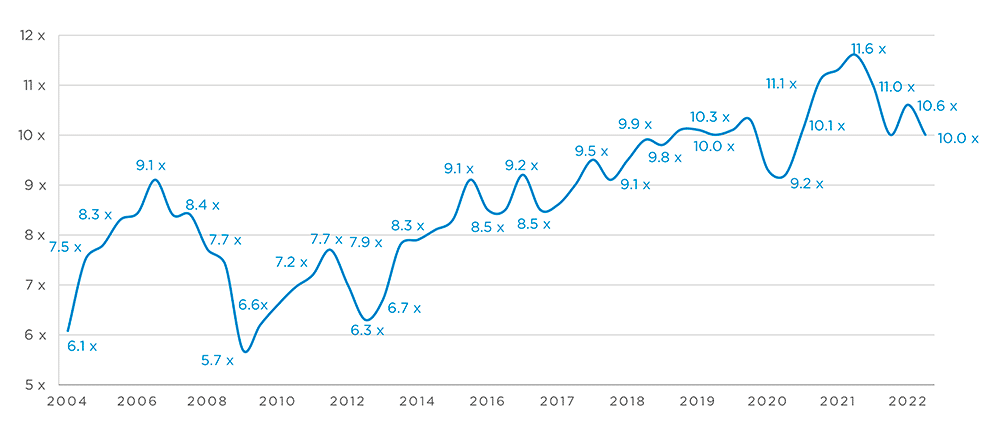
Prices paid by strategic buyers down slightly
In Q2, multiples paid by investment funds were stable, at 10.8x EBITDA, but down by 2x EBITDA from the high of Q2 2021.
Mid-market private equity fell significantly in Q2 (–20%), especially for deals > €150M (–30%). This is attributable to the gradual decline in financial conditions (interest rates, borrowing capacity) and to the rapid downward revision of growth forecasts. Nonetheless, funds continue to benefit from record levels of money available for investment(1), and unlisted assets still enjoy strong profitability(2). As a result, funds focus their investments on high-quality assets at prices which are somewhat high but stable.
Multiples paid by strategic buyers declined slightly, to 9.9x EBITDA, their level in Q4 2021. They were affected by the sharp contraction in equity markets (see part 1).
(1) 54% of LPs have increased their target allocations to private equity in the past two years, with only 10% reducing allocations (source: Coller Capital Global Private Equity Barometer, June 2022)
(2) TRI of 12.2% over 15 years (source: EY / France Invest, June 2022)
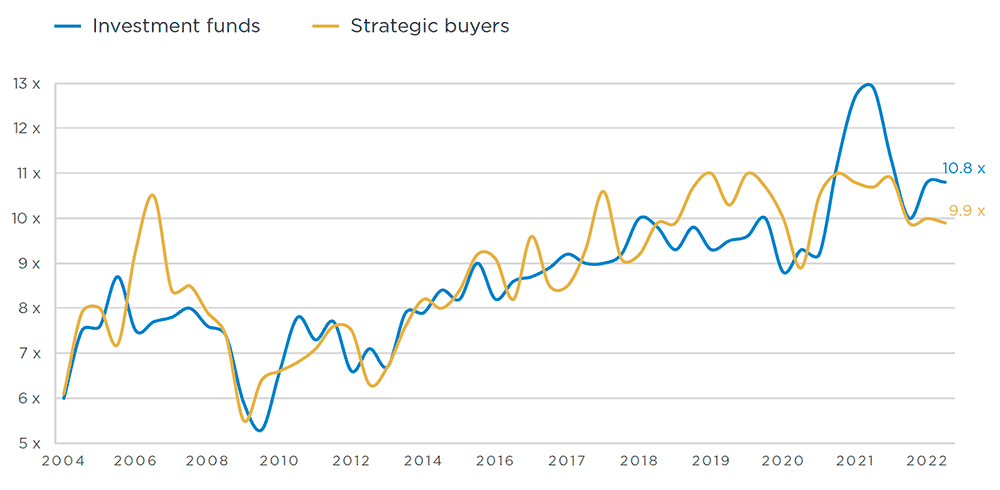
Argos Index® mid-market Median EV/EBITDA multiple on a six-month rolling basis
Source: Argos Index® mid-market / Epsilon Research
A growing share of transactions at multiples < 7x
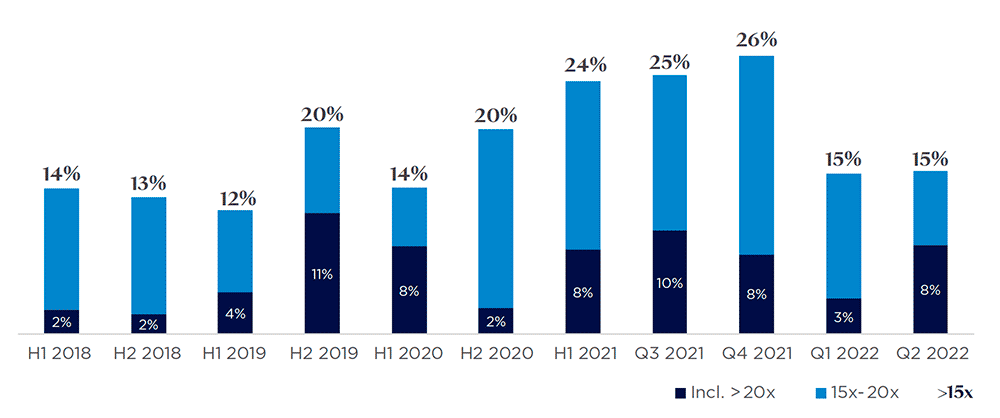

Decline in mid-market M&A activity correlated to fewer LBO deals
M&A activity declined by 14% in volume in Q2 2022 compared with the previous quarter, but is stable in terms of value. It has resisted the deteriorated economic and financial forecasts better than the global M&A market, which fell 23% in value in Q1 compared with 2021.
Buyout activity fell significantly in Q2: –19% in volume and –43% in value, particularly for large transactions (–30% for deals between €150m and €500m). As a result of the rapid hike in interest rates and reduced borrowing capacity for LBO deals, funds have become more selective in their investment choices.

Buyout funds were less active in Q2. Their share in mid-market M&A declined significantly, in both number of deals and value.
